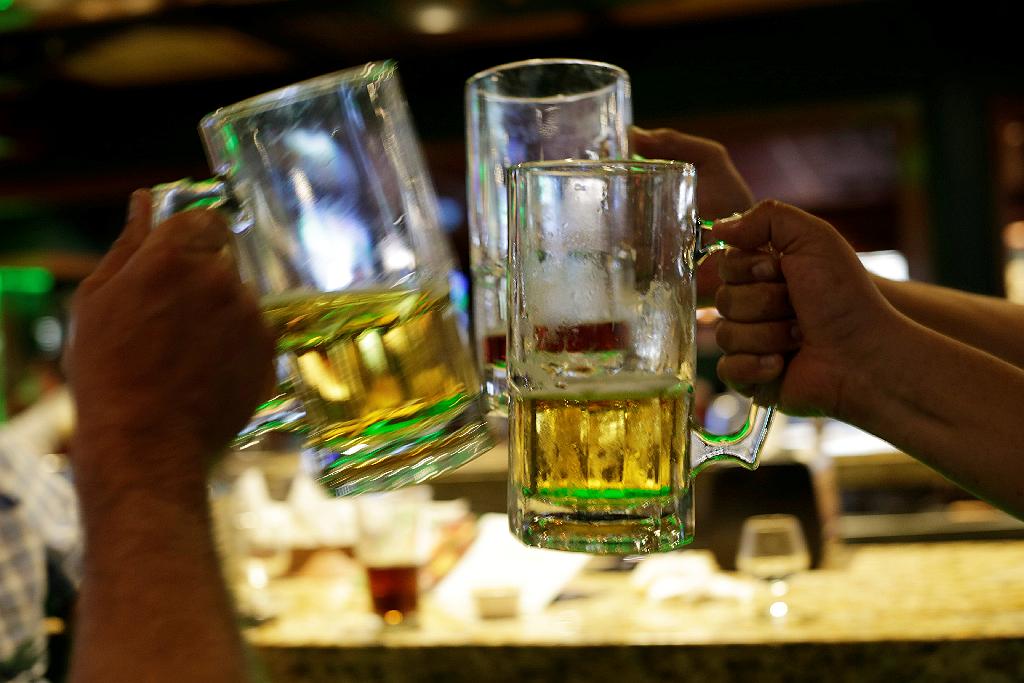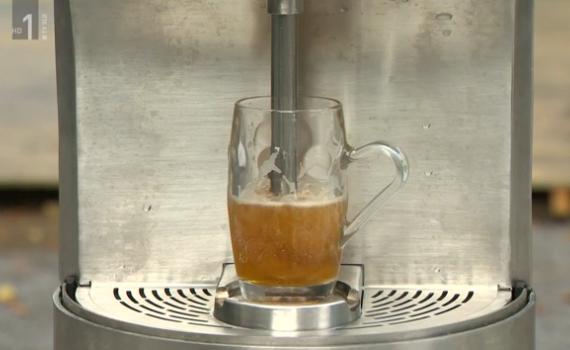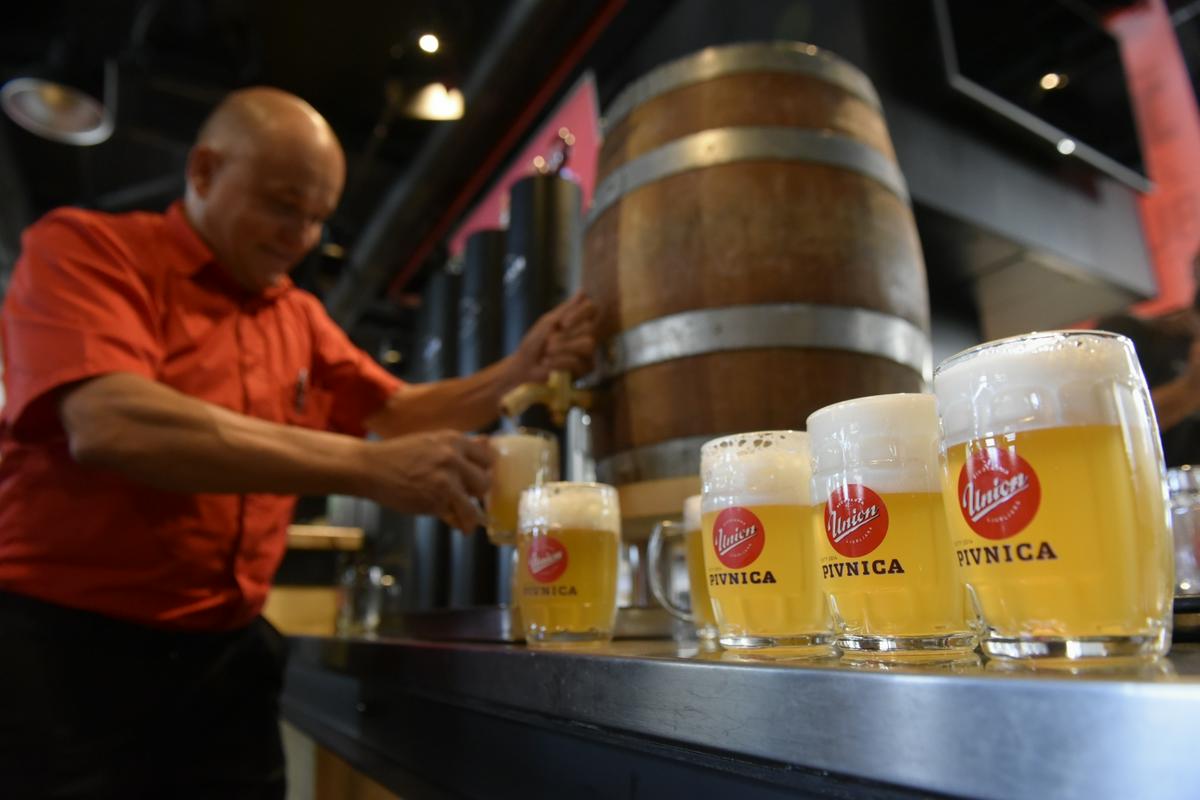


Located in Žalec, this is a unique tourist attraction that is not just the only such fountain in Slovenia, but the only one in the world. It draws visitors by the thousands, both from Slovenia and abroad. Last year visitors could enjoy a brew of native Žalec Kukec, the dark blacksmith beer from the Pod Roglo hotel brewery, golden light Kratochwill beer, copper Adam Ravbar, and a pint from the Vizir brewery. This year visitors will also have the option of alcohol-free beer on tap.
The story of the fountain
The Green Gold Beer Fountain is above all an innovative and striking tourist product, the first of its kind in the world, and one which has placed Žalec on the global map of unique attractions. The fountain is a homage to the hop-growing heritage of the Lower Savinja Valley and the town itself.
Its very shape symbolises a hop seed cone, which is indicated in the two semi-circles or two fountains, one for beer and the other for water. The semi-circles are adorned with copper lace, symbolising the head of foam on beer. The inventive nature of the Green Gold Beer Fountain can be seen in the interweaving of tales of the hop-growing heritage, the innovative concept of beer on tap, the superlative technology and attractive architecture. This is a way of linking a tradition, which is most deeply rooted in the Savinja Valley, with present times and preserving it for the future.
This year the fountain acquired another pipe and an automatic glass washer. Owing to the special chamber where the decanting nozzle is sterilised by UV rays, the light indicator of the levels, detection of the presence of CO2 in the machine room and a advanced system of hooking up pressurised gases, the fountain is always clean and the beer uncontaminated.
The Municipality of Žalec has also arranged the area surrounding the fountain. By improving both the spatial and hygiene conditions, the space by the fountain is no longer just a “beer hall,” but also a beach by the fountain, a library by the fountain and once a month a kitchen at the fountain. This space is attractive not just because of its functionality, but also owing to the possibilities it opens up for the area. In Žalec you can now tour the town and its surroundings in the old-time Oldi Goldi bus. As part of the Green Gold Festival, throughout the period when the fountain is open in April until it closes on 31 October, there are numerous experiences on offer: concerts, sports events and other activities related to hops and brewing, which serve to preserve the hop-growing tradition. Each year Žalec chooses a Fountain Ambassador, who receives their ambassadorial beer (this year the beer is a green Štajerc). This system provides an opportunity to showcase the flavours from smaller breweries, which are increasing in number every day in Slovenia.
Slovenians have always been beer lovers
Slovenians cannot compare themselves to other nations in consumption of beer per capita, but they do have a refined taste for its quality and an abundant knowledge of how to create a high-quality brew. Evidence that our Slovenian ancestors were already steeped in hop-growing and brewing traditions very early on can be found in the records of feudal serf farms. The first known brewery, a feudal brewing operation, was in the tower of Loka Castle. There are also records of beer in some medieval land registers. From the exclusive and rare stone beer and the festive koritnjak of Carinthian farmers, towards the end of the 18th century beer brewing became a serious business.
I’ll have one bottled or on draught, please
The terms for the beer in Slovenia brewed by the oldest and biggest brewery, Pivovarna Laško Union, are simply Union and Laško. They are still the most popular, although alongside the big companies the country has a multitude of craft breweries that are just as good, although tradition remains something that Slovenians love and value.
It is admirable that in addition to their efforts to produce high quality beers, Slovenians put great efforts into preserving the cultural heritage associated with brewing.
The former Pivovarna Union malt house, with its nearly half-century old architecture, has been preserved to the present day virtually unchanged on the outside. It was built in 1923 in the tradition of the late Baroque. Up until the 1970s it was used for obtaining malt, one of the four basic ingredients of beer. A decade later it was converted into a staff canteen. After 1987 it was then converted into one of the biggest brewing museums in Europe. The Ljubljana city authorities declared the Pivovarna Union Museum Collection a cultural monument of local importance, for it showcases an important industrial and technical heritage and at the same time strengthens awareness of Ljubljana as an industrial city. It displays antiquated and obsolete brewing machinery that has been painstakingly refurbished as exhibits. In 1986 a permanent museum collection was set up with the title Brewing Museum. The exhibition received numerous accolades, including an EMYA award given by the European Museum Forum, and a Valvasor award from the Slovene Museum Society. In 2014, on the 150th anniversary of the brewery, the museum had a make-over. At the permanent exhibition of the Brewing Museum visitors can see a historical presentation of beer production, barrel-making, distribution, innkeeping equipment, beer vessels, the development of labels, marketing and two reconstructions of premises. The permanent exhibition, A Story Going Since 1864, shows the historical development of Pivovarna Union brewery.

































































